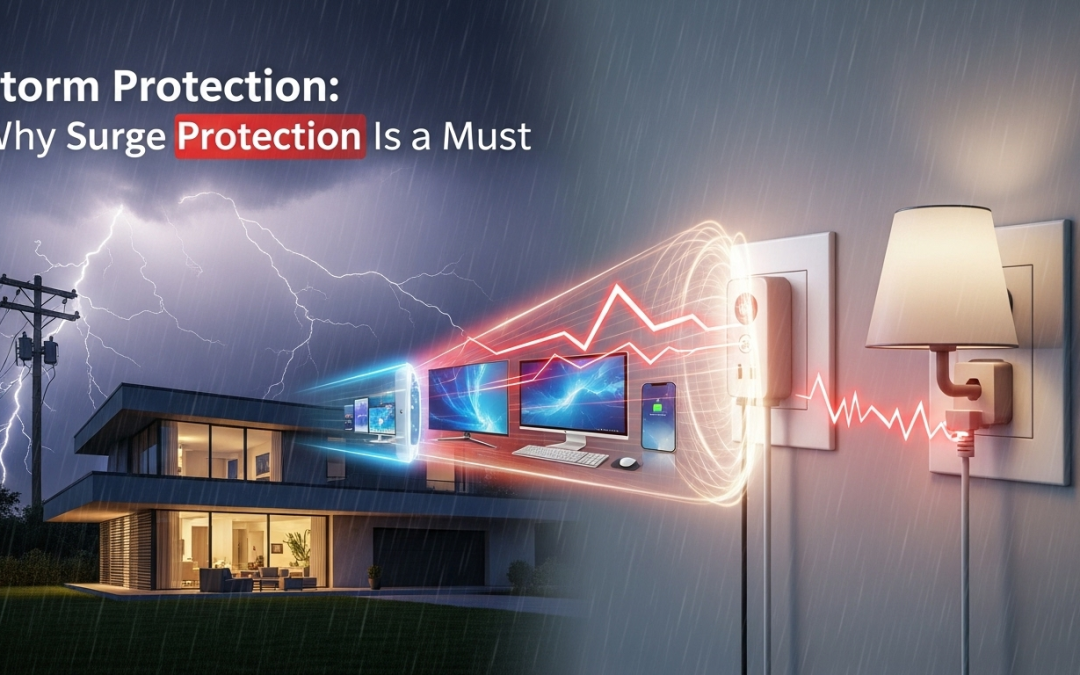The electrical system of a contemporary Malaysian residence extends beyond merely supplying 240V to an outlet. In the present day, each home represents a sophisticated network of devices that require high-speed data, communication, and control signals. This modern digital environment is supported not by conventional electrical wiring, but rather by organized low-voltage cabling. For the skilled wireman, excelling in this specialized field is no longer a choice—it is essential for ensuring the longevity of your business and establishing yourself as an indispensable collaborator in the development and refurbishment of Smart Malaysia homes and structures.
1. What is Structured Extra Low Voltage (ELV) Wiring?
Structured wiring, often referred to as Extra Low Voltage (ELV) wiring, is the organized, systematic method of installing the backbone for a home’s telecommunications, data, video, security, and automation systems.
The core differentiator is the voltage, as regulated by the Suruhanjaya Tenaga (Energy Commission) and the Malaysian Standard (MS IEC):
-
Low Voltage (LV): Typically 240V (single-phase) or 415V(three-phase) AC, used for power and lighting. Governed by the Electricity Supply Act 1990 and the MS IEC 60364 series.
-
Extra Low Voltage (ELV): Typically 50V or less (most commonly 12V or 24V DC), used for data and signalling (e.g., Cat6, Fiber).
Key Components of an ELV System:
-
Central Distribution Panel/Multimedia Cabinet: A dedicated, centralized enclosure where all ELV cables terminate. This hub manages network traffic and security systems.
-
Star Topology: All cable runs radiate outward from the central panel directly to their respective outlets, making troubleshooting and upgrading significantly simpler.
-
Future-Proof Media: Primarily Category 6A (Cat6A) and Fiber Optic cables, supporting speeds of 10Gbps and beyond, crucial for services like TM Unifi.
2. Core Cable Standards for the Malaysian Market
Selecting the correct cable is critical to avoid costly issues and performance degradation in the future. For high-speed data and Power over Ethernet (PoE) applications such as wireless access points (WAPs) and security cameras, Category 6A (Cat6A) cables should be the minimum standard. It is recommended to run at least two Cat6A cables to every primary location, such as a study or TV console, as they reliably support speeds up to 10 Gbps and can handle the heat generated by high-wattage PoE—an important consideration in Malaysia’s hot climate. For ultra-high-speed backbone and long-distance connections, fiber optic cables are the preferred choice. Pre-terminated fiber runs from the service entrance to the central panel and major media hubs provide immunity to electromagnetic interference (EMI) and future-proofing for services up to 40 Gbps. RG-6 Quad Shield cables, on the other hand, are mainly used for legacy video systems such as Astro or satellite connections. While their use is limited in modern IP-based video systems, they remain necessary for certain traditional cable and security camera installations.
3. Essential Installation Best Practices
The most significant threat to ELV wiring performance is Electromagnetic Interference (EMI) from the high-voltage circuits.
A. Separation of LV and ELV
The cardinal rule, guided by safety codes like MS 1979 (Code of Practice for Domestic Electrical Installations), is separation:
-
Parallel Runs: ELV cables must not run parallel to 240V power cables (like PVC insulated cables) for more than a short distance. A minimum separation of 300mm (12 inches) is the recommended best practice.
-
Perpendicular Crossings: If crossing is necessary, the cables must cross at a 90-degree angle to minimise the area of interference.
-
Dedicated Pathways: Use separate trunking or conduits for ELV and LV wiring. Never bundle them together.
B. Cable Management and Integrity
ELV cables are delicate; mishandling directly impacts data performance.
-
Bend Radius: Never bend a Cat cable sharply. Excessive bending can distort the internal wire pairs, leading to crosstalk and data loss. Use gentle, sweeping curves.
-
Pulling Tension: Never pull a cable with excessive force. Over-tensioning can stretch the copper, changing its electrical characteristics.
-
Termination: Use high-quality, matching connectors (keystones/patch panels) rated for the cable (e.g., Cat6A rated connectors for Cat6A cable). Poor termination is the most common cause of network failure.
C. Smart Home Requirements (Neutral Conductors)
Modern smart switches and sensors require a constant, low-current power source for wireless connectivity (Wi-Fi, Zigbee). This requires the presence of a Neutral Conductor.
-
Best Practice: Ensure a neutral conductor is run to every switch and junction box location, even if the current 240V code doesn’t strictly require it for that specific circuit. This small addition instantly makes the circuit compatible with nearly all modern smart lighting devices.
Conclusion
Incorporating Extra Low Voltage (ELV) expertise enhances your service from mere power distribution to essential whole-home connectivity infrastructure. By gaining proficiency in the separation, standards, and termination of structured wiring, you ensure that the 240V power system functions safely while also ensuring that the ELV network operates at its maximum multi-gigabit capacity. This comprehensive integration is a defining characteristic of the contemporary, professional Wireman in Malaysia.

